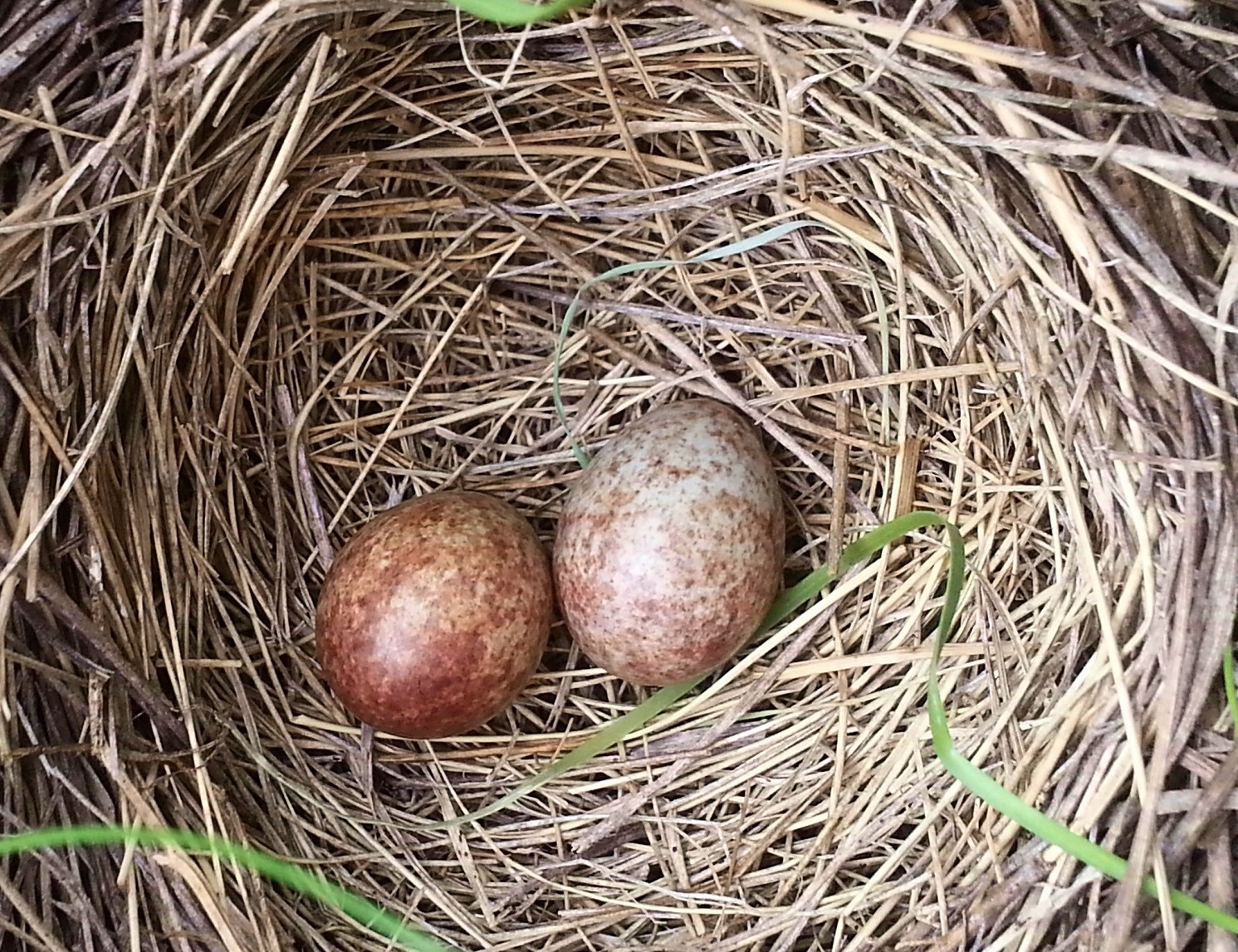Blog

#bioPGH Blog: Brown-headed Cowbirds
 A resource of Biophilia: Pittsburgh, #bioPGH is a weekly blog and social media series that aims to encourage both children and adults to reconnect with nature and enjoy what each of our distinctive seasons has to offer.
A resource of Biophilia: Pittsburgh, #bioPGH is a weekly blog and social media series that aims to encourage both children and adults to reconnect with nature and enjoy what each of our distinctive seasons has to offer.
For many of us, the word “parasite” evokes images of wriggling microscopic worms, leeches in muddy waters, or skin-crawling ticks. Though they are well-known examples of parasites, ecologically speaking, “parasitism” refers to a relationship between two species in which one benefits while the other is harmed. There are quite a few unexpected examples of this! In fact, one local species of bird, the brown-headed cowbird, displays quite a surprising form of parasitism right under our noses—let’s explore!
Cowbirds engage in curious behavior called brood parasitism: female cowbirds lay eggs in the nests of other bird species. In fact, a female cowbird can lay anywhere from 30-40 eggs per average nesting season, and all of the eggs will be laid in other bird’s nests! Once her eggs are laid, the “host” parents from the invaded nest then unwittingly incubate the cowbird eggs. There have even been rare documented incidences of cowbirds removing eggs (or live chicks!) from an existing nest before laying their own.
Cowbird chicks continue the problematic legacy of their parents as they out-compete the host’s own chicks. The cowbird chick will join in with its nest-mates in chirping for food—which drives the parents to continue foraging for dinner—but the cowbird chick usually manages to dominate the food supply that the host parents bring back to the nest. This leads to faster growth from the cowbird chicks over the host chicks. Ironically, University of California Berkeley researchers noted that cowbird chicks actually fare better when there are other host chicks in the nest than when a cowbird chick is alone in the nest. The collective chirps of multiple chicks encourages more foraging from the parents than hungry chirps from a single chick, but the cowbird chick still consumes the majority of the food—ultimately consuming even more than if the chick had the nest to itself!
Intriguingly, there is some evidence to indicate that cowbirds don’t select their nests at random. One study of cowbird parasitism observed that cowbirds were more likely to lay their eggs in the nests of species that spent more time building their nests, whose females made shorter visits to the nesting sites, whose males vocalized more often near the nest, and species that were more likely to perch when visiting the nest. The odd realization behind these studies is that brown-headed cowbirds have to closely observe potential hosts before laying their eggs—practically ornithological espionage!
Brown-headed cowbirds aren’t the only examples of egg-laying shenanigans, though. Other bird species that engage in brood parasitism include cuckoos, whydahs, and black-headed ducks. There are even a number of fish species who leave their eggs with others (one species was even named after a bird: the cuckoo catfish). Out of all of the examples, our native cowbirds still are a rarity even among the tricksters. Most other birds or fish who leave their eggs with others tend to specialize in parasitizing a certain species. They may be so specific that the eggs of the parasite parents may even resemble the eggs of their host! Cowbirds, though, have been known to parasitize the nests of at least 200+ different species of birds.

Cowbird egg in the nest of a Savannah sparrow in Canada
Connecting to the Outdoors Tip: If you check out eBird, you can take note of some recent sightings of brown-headed cowbirds in some of our local parks. Schenley Park and Frick Park both have a number of sightings, if you are close to Phipps.
Continue the Conversation: Share your nature discoveries with our community by posting to Twitter and Instagram with hashtag #bioPGH, and R.S.V.P. to attend our next Biophilia: Pittsburgh meeting.
Resources
NOVA ScienceNOW— Surveillance Video Catches Cowbird Killing Babies
Banks and Martin 2001—Host activity and the risk of nest parasitism by brown-headed cowbirds
Cornell Lab of Ornithology—Brown-headed Cowbird
eBird—Brown-headed Cowbird Sightings in Pittsburgh
Ortega, Catherine—Cowbirds and Other Brood Parasites
Photo Credits: Nicholas A. Tonelli CC-BY-2.0, Bear Golden Retriever CC-BY-2.0, and Katie Fleming CC-BY-3.0

